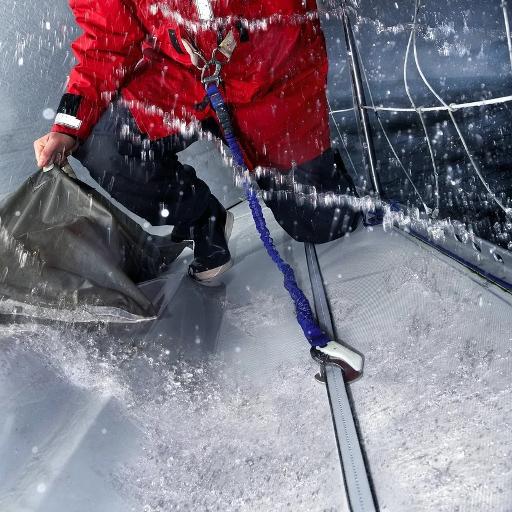Jacklines and jackstays are lines attached to the fore and aft of your boat, allowing your crew to clip on via their safety tether and will prevent ‘jolly jack tar’ (the old name for a sailor) from falling overboard. These lines are vital in heavy conditions, especially, when you require a crew member to go forward to the mast or bow.
Whilst the basics of these lines and clips are apparent to the majority of skippers, there are a few considerations to ensure that these safety lines operate properly.
Firstly, you should ensure that the jacklines should have limited ability to stretch and should be of sufficient strength for the purpose. Many sailors and event organisers favour webbing over wire jacklines with the webbing in a contrasting colour and fabricated so that it does not roll underfoot.
Earlier, inferior webbing jacklines were more prone to chafing and sun/UV damage than wire. However, modern webbing materials are more chafe-resistant and fabricated to avoid problems with vibration and wear.
Like, for example, Wichard jacklines are easily identifiable at night thanks to the retro-reflective strip incorporated into the webbing. Its anti-abrasion sides also prevent it from premature wear. This short video from Wichard shows the jacklines available in our shop and the installation process on your boat:
The lines should be properly secured fore and aft so that they can readily manage the force of a person falling. Wherever feasible, the lines should be placed close to the centre line of the boat, so that the safety line will prevent a sailor from falling into the water.
If the line were too close to the edge of the boat and the tether too long, a crew member could fall into the water still attached to the boat and they could drown in such circumstances. It is therefore essential to consider this aspect when placing your jacklines and choosing the safety lines for your crew.

It is always preferable that crew members should use a double safety line, and where they have to unclip and clip on again, say when traversing the boat, crew members should be taught that they should always clip on the second clip prior to releasing the original one.
A crew member should be able to clip onto a jackline on leaving the safety of the cabin and unclip as they return, to ensure their safety.
Within the cockpit and other working areas of your yacht, you should also have clipping-on points for the crew members to attach their tethers to, and these should accommodate up to two-thirds of your crew without relying on the jackstays.
And always remember, even in the lightest of conditions, when you might not be clipped on, you should always have one hand for you and one hand for the boat! To see our range of safety equipment, including modern purpose-fabricated jacklines and safety tethers, please click below:
If you have any questions regarding this article or want expert, impartial advice on any aspect of your boat’s equipment, please feel free to contact Upffront by email, at [email protected]


Jacklines and jackstays - important things to know